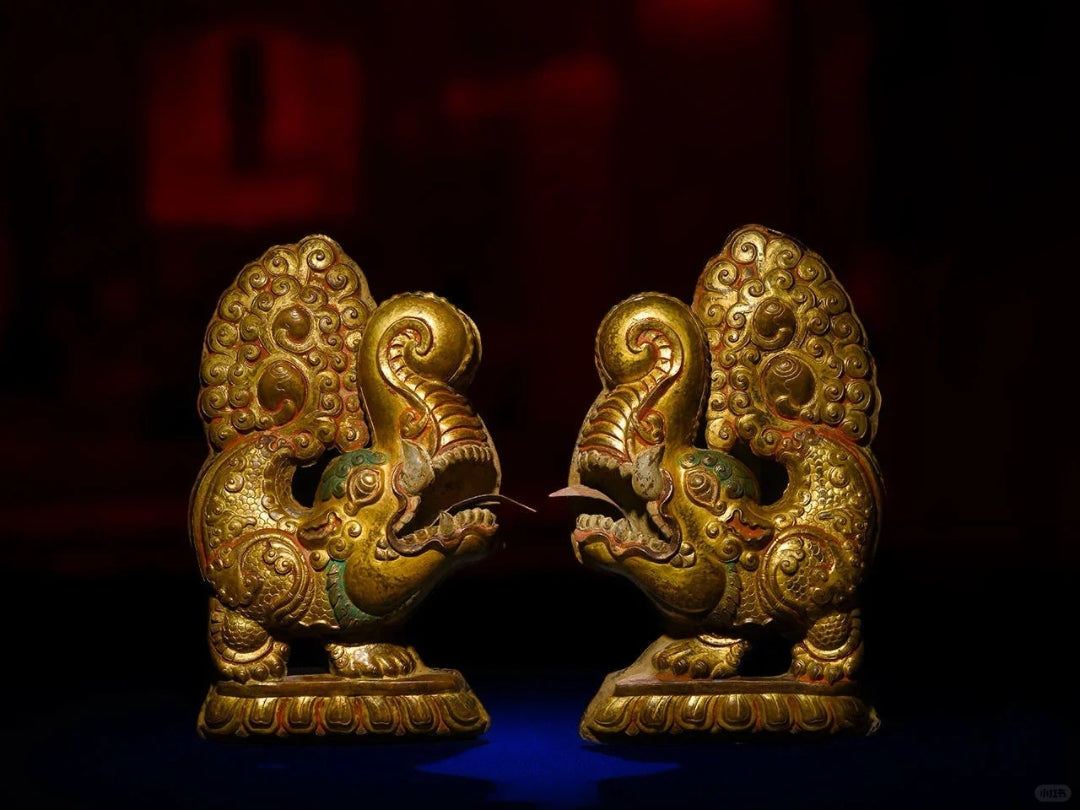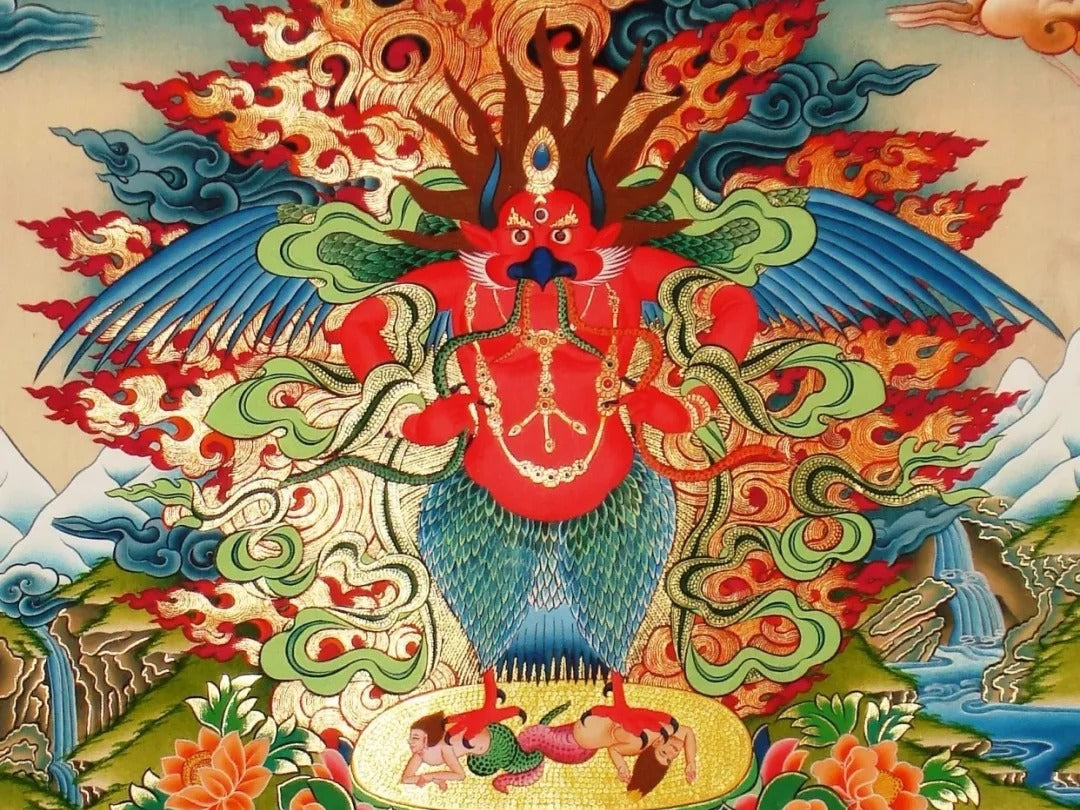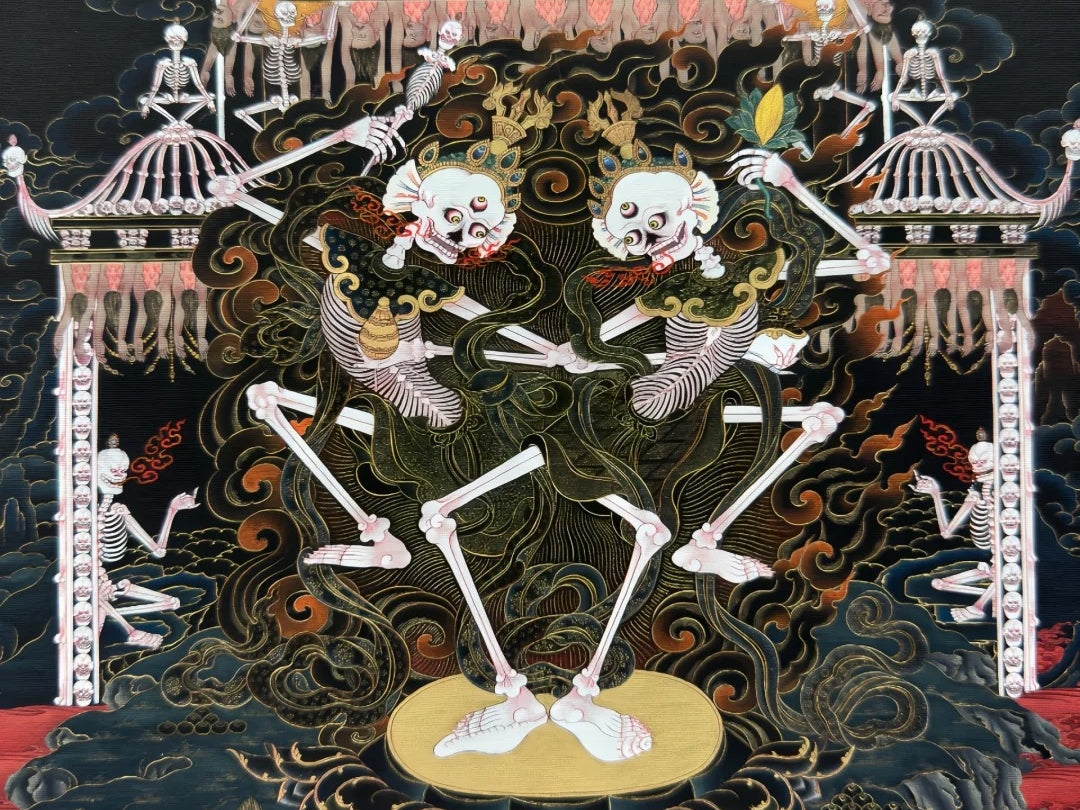The makara—known in Sanskrit as makara, often translated as “sea‐monster” or “crocodile”—has swum through centuries of Buddhist and Vedic lore into the heart of Tibetan art and spirituality. Originally imagined as the mount of water deities in ancient India, today you’ll spot makara heads on monastery rooftops, carved into Buddha pendants, and stamped onto Tibetan Buddhist jewelry as a reminder of resilience and elemental power. Let’s explore how this hybrid creature evolved from mythic beast to timeless symbol.

Makara in Ancient Myth
Vedic Origins
– In early Vedic texts, the makara serves as the vehicle for the river god Varuna and the river goddess Ganga, embodying the unpredictable power of water.
– Some scholars think the makara may reference freshwater dolphins or crocodiles seen in the Ganges, giving rise to its “long‐tailed sea monster” reputation.
Composite Creature
– Descriptions vary wildly: a crocodile’s forepaws, an elephant’s trunk or arched snout, boar tusks, monkey‐like eyes, and peacock tail feathers adorned with spirals.
– Over time, artists added lion’s claws, a horse’s mane, fish gills, curling horns (sometimes deer or dragon), and the so‐called “makara comet” swirl on its fin.

Symbolic Meaning: Power & Persistence
– Natural Force: As water’s guardian, the makara symbolizes life’s ebb and flow—and our own emotional depths.
– Unyielding Tenacity: Legends say the makara never abandons its quarry, a metaphor for steadfast practice and unwavering focus.
– Ritual Weapon Motif: In Vajrayāna, axes, iron hooks, and vajras often burst from a stylized makara mouth, merging spiritual protection with raw strength.
Makara in Tibetan Ritual & Jewelry
Architectural Guardians
– Look up at any Tibetan temple roof and you’ll see gilded makara water spouts that channel rainwater, protecting walls from decay.
– At spring sources, stone makara heads serve as fountains—both functional and fiercely beautiful.
In Sacred Jewelry
– Makara–themed Buddha Pendants: Sterling silver or brass pendants echo its jaw, signifying resilience for daily wear.
– Spiritual Jewelry Accents: Makara carvings on mala beads and charm necklaces infuse each piece of Tibetan Buddhist jewelry with elemental energy.
– Contemporary Design: Modern artisans blend traditional thangka motifs with makara details for a fresh take on spiritual jewelry that suits both temple and street.
Makara in Wood & Metal Carving
– Temple Doorways: Paired makara flank door tops or line wood‑carved corridors in Nepalese and Tibetan monasteries, warding off negativity.
– Sandmandala Supports: The four portal corridors of three‑dimensional mandalas rest on cross‑handled vajras whose forked ends terminate in makara heads—symbolizing stability and the indestructible nature of the dharma.

Bringing Makara Meaning Home
Whether you choose a Buddha pendant featuring a subtle makara motif or hang a small brass makara spout in your garden fountain, this ancient symbol invites you to embody both flexibility and strength in the face of life’s currents. In your next piece of Tibetan Buddhist jewelry, look for the telltale swirl, the curled horn, or that bold open mouth—each detail linking you back to a mythic creature whose power endures.




